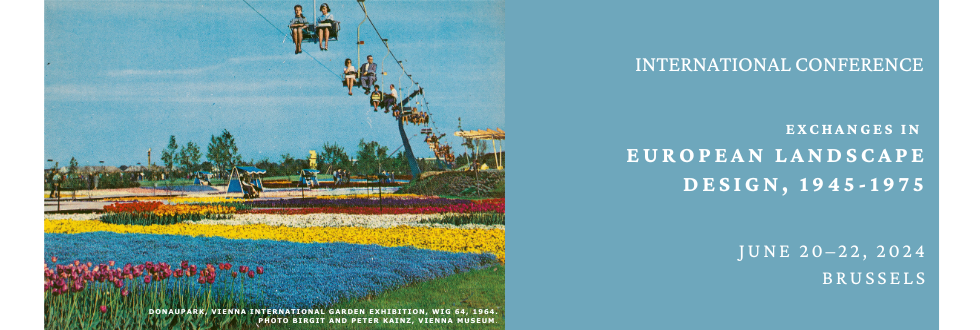
|
|
|
Presentation
Exchanges in
European Landscape Design, 1945–1975
The symposium Exchanges in European Landscape Design, 1945–1975 assembles a group of leading scholars from Europe and North America and asks them to examine the relations and transferences that influenced the course of landscape architecture in the postwar period. The causes and aftermath of the Second World War firmly established that life in the twentieth century was truly global, and that no nation today can exist in isolation.
In many countries the principal task facing landscape architects was the reconstruction and recovery from the deprivations resulting from the war. In other countries, providing access to green space for play and recreation, and the shift to suburban living, acquired increased prominence. Among many others the key questions for landscape architects were: How to best shape the rebuilding of cities and the form of suburban development—in particular, how to address the acute need for housing? How can landscape architecture positively affect the health and lifespans of its citizens? And in what way should old manners of garden and landscape design be superseded or discarded in favor of aesthetic ideas adopted—and adapted—from painting, sculpture, architecture, and engineering, to embody a new relationship between designed and natural environments? To these must be added the impact of international exchange through education and training, garden expositions, and professional conferences and societies such as the International Federation of Landscape Architects founded in 1948.
The symposium program comprises three sessions presenting a wide distribution of creative movements, political systems and geographic areas. Our speakers will discuss not only the internal developments regarding landscape design in their home countries, but also the influences on education and design arriving from other lands. Although a symposium of this length is unable to cover every European country, or any country in detail, it will offer a broad perspective on an important subject missing from the history of landscape architecture in Europe.
Simultaneous English/French translation available (bring your headphones).
Presentation2
Le colloque Exchanges in European Landscape Design, 1945-1975 (Échanges autour de l’art paysager européen, 1945-1975) réunira des chercheurs d'Europe et d'Amérique du Nord pour examiner l’influence des relations et des transferts sur le développement de l'art des jardins et du paysage dans la période de l’après-guerre.
Les causes et les conséquences de la Seconde Guerre mondiale ont clairement démontré la mondialisation progressive des styles de vie, des modes d’habitation et du cadre de vie, conduisant les architectes paysagistes à évoluer pour accompagner la reconstruction et la restauration des espaces de vie publics et privés. L’accent est mis sur l’importance croissante des accès aux parcs, jardins et espaces verts pour les loisirs et le bien-être, ainsi que sur la recherche d’environnements de qualité dans les zones suburbaines. Dans ce contexte, les architectes paysagistes sont confrontés à de nouveaux défis, notamment l’influence positive de l’architecture paysagère sur la santé et la vie des citoyens, l’évolution des pratiques du métier à travers de nouvelles approches inspirées des disciplines artistiques ou techniques, comme la peinture, la sculpture, l'architecture ou l'ingénierie, et la création de synergies entre les nouveaux espaces paysagers et les environnements naturels. Parallèlement, les échanges internationaux se multiplient à travers l'éducation et la formation, les expositions, les conférences et les dynamiques insufflées par la Fédération internationale des architectes paysagistes (IFLA) fondée en 1948.
Traduction simultanée anglais/français (amener vos écouteurs).
Organization
Organized by the Institut Européen des Jardins & Paysages, in partnershiph with Comité René Pechère and CIVA.
Information : contact@iejp.eu
Partners

with the support of


